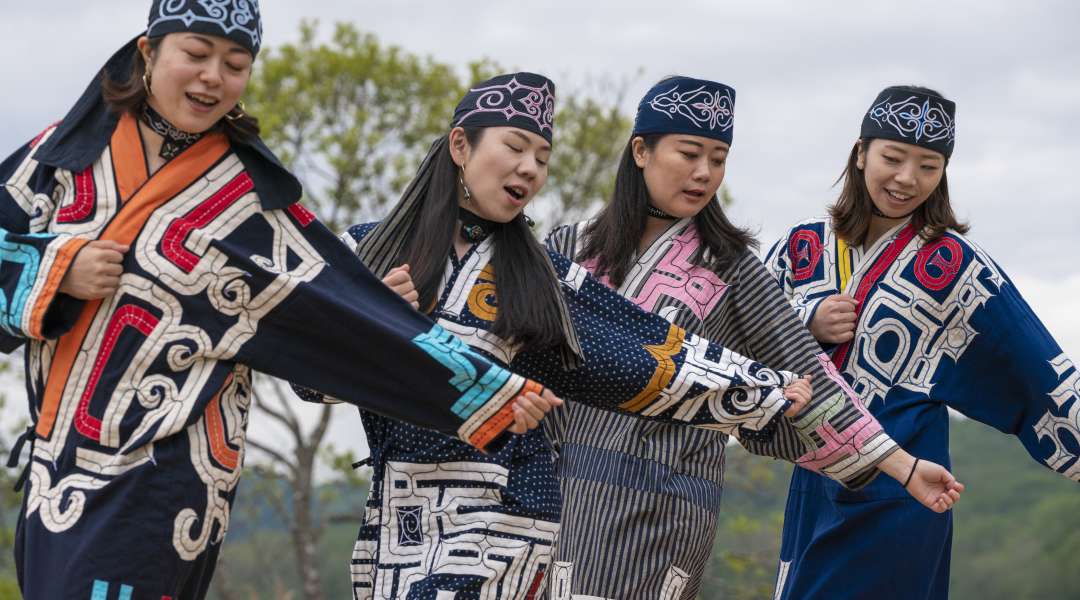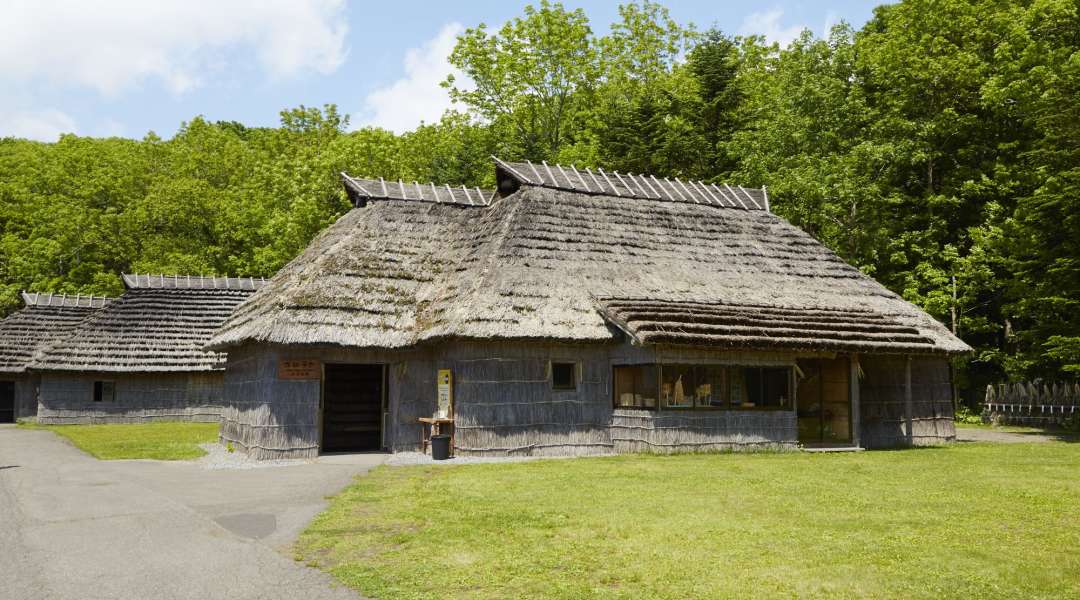 © Courtesy of The Foundation for Ainu Culture
© Courtesy of The Foundation for Ainu Culture
Hokkaido is Japan's most northern prefecture known for its majestic wilderness, freezing winters (ideal for winter sports), delicious seafood, and indigenous culture. You might have heard about the Sapporo Snow Festival and Furano Flower Fields. However, what do you know about the people who have lived on Hokkaido for centuries? It's time to learn more about the Ainu people and their intrinsic connections with the natural wonders of Hokkaido.
 © Courtesy of The Foundation for Ainu Culture
© Courtesy of The Foundation for Ainu Culture
Who are the Ainu?
They are the first settlers on Hokkaido and the surrounding areas! Officially recognised as indigenous in 2008, their ancestors were the northern Jomon people who had a distinct culture and language. What’s even more interesting is that for centuries their language only functioned verbally and was only transcribed quite recently. Think about the cultural wealth that has been hiding in the north of Japan! The only thing Ainu has in common with Japanese is the word order but some names for places in the north of the country are of Ainu origin! The list includes places such as Sapporo (meaning: dry, large, river) , Niseko (cliff jutting over a river), Lake Shikotsu (large valley) and names ending on -be or -betsu!
 Deep Connections
Deep Connections
Ainu keep their traditions alive even now and have an unbreakable bond with nature. They believe that spirits are present in every object and part of the natural world! Deities in a spirit form called ‘kamuy’ hide all over the place. Does it sound familiar to anyone? Some people think that the Japanese word ‘kami’ for Shinto gods comes from Ainu language! Don't forget about these spirit deities when appreciating the wonderous natural worlds of Hokkaido that brought these beliefs to life.
 Vibrant Culture
Vibrant Culture
Ainu are famous for their culture and crafts which you can find in every area of Hokkaido. Wood carving, embroidery with bold symmetrical patterns, traditional dances performed to celebrate an array of special occasions; these are just a few examples of a culture that dates back thousands of years! Moreover, their dances have been listed by UNESCO in 2009 as intangible cultural heritage of humanity. The Ainu used to live in small villages consisting of a few traditional houses called 'chise' built along Hokkaido’s rivers- ideal for fishing and keeping safe. Nowadays, despite being a hunter-gatherer society back in the day, the lives of the Ainu in the modern era have changed and adapted to the ever evolving world.
 © Courtesy of The Foundation for Ainu Culture. Image is for illustration purposes
Where to find Ainu culture
© Courtesy of The Foundation for Ainu Culture. Image is for illustration purposes
Where to find Ainu culture
Your main ports of call for Ainu culture should be some of the fewer places where the remaining Ainu population live. The best in this respect is Ainu Kotan, literally meaning 'Ainu village', located on the shores of Lake Akan, and a true hub of Ainu culture whether that's cuisine, craft, performance or outdoor experiences. Based around a quaint central shopping street lined with Ainu-owned gift shops and craft workshops, some of the highlights are the epic productions retelling key stories of Ainu folklore at the Akanko Ainu Theatre, sampling the unique flavours of Ainu cuisine at Poronno and Hamakko restaurants, going on a forest tour with an Ainu guide from Anytime! Ainutime! and an interactive light show and night tour with Kamuy Lumina.
However, to ensure their memory and traditions are kept alive, there are several museums and cultural centres elsewhere open to visitors! Shiraoi (meaning 'place of many fireflies') is another great spot to dive into local Ainu culture but you can also head to Lake Poroto where the new Upopoy National Ainu Museum and Park opened its doors to visitors in July 2020.
 © Courtesy of The Foundation for Ainu Culture
© Courtesy of The Foundation for Ainu Culture
Upopoy means ‘singing in a large group’ in Ainu language and it symbolises the facility’s main goal to revitalise and promote Ainu culture. With a museum, park, memorial space for Ainu celebrations, restaurants, and shops it gives you full insight into the essence of Ainu. You can take a bite of Ainu delicacies made with the use of traditional methods and ingredients. Feeling a bit more adventurous? Try learning some Ainu language or maybe crafts like embroidery or wood carving!
 © Courtesy of The Foundation for Ainu Culture
New Directions
However, it’s not just museums that try to celebrate the rich flavour of the Ainu culture. In January 2022 Hoshino Resorts are planning to open a hotel that honours their heritage called KAI Poroto by the lake not too far from the Upopoy Centre! Hotel visitors will be able to enjoy waters from the local Shiraoi onsen, traditional Ainu motifs, and natural views of the forest where Ainu used to live in a symbiosis with the local wilderness.
© Courtesy of The Foundation for Ainu Culture
New Directions
However, it’s not just museums that try to celebrate the rich flavour of the Ainu culture. In January 2022 Hoshino Resorts are planning to open a hotel that honours their heritage called KAI Poroto by the lake not too far from the Upopoy Centre! Hotel visitors will be able to enjoy waters from the local Shiraoi onsen, traditional Ainu motifs, and natural views of the forest where Ainu used to live in a symbiosis with the local wilderness.
 © Hoshino Resorts
© Hoshino Resorts
At the moment all visitors have to book their tickets in advance as a safety precaution so don’t forget to book your visit before coming to Ainu Kotan, Upopoy National Ainu Museum and Park or KAI Poroto!
For information on how to get to Ainu Kotan, check out our guide to Ainu experiences here.
To stay up to date with all the latest happenings in Japan follow us on Instagram, Facebook or Twitter!

























































